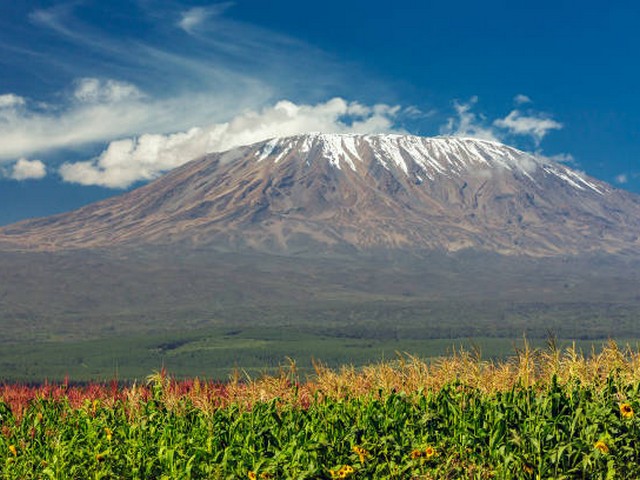How Hard Is It To Climb Kilimanjaro? A Journey to the Roof of Africa
Embarking on the adventure to stand atop Mount Kilimanjaro, you engage more than just your physical strength – you stir the spirit, challenge your endurance, and awaken a connection with nature. At the Kilimanjaro Centre for Trekking and Ecotourism (KCTE), we guide you through the mystical routes of this majestic mountain, ensuring you soak up every bit of the experience. But the burning question remains: How hard is it to climb Kilimanjaro? In this detailed guide, we will walk you through what to expect, preparation tips, and why conquering Kilimanjaro might just be the most inspiring journey you'll ever undertake.
Understanding the Challenge: Is Kilimanjaro Within Your Reach?
Often referred to as the "Everyman's Everest", Mount Kilimanjaro is the highest peak in Africa and one of the world's most accessible high summits. This might lead you to ask, "Can I really climb Kilimanjaro?" The answer is a resounding yes, but it's not without its challenges.
Physical Demands: What Does it Take?
Climbing Kilimanjaro does not require technical climbing skills, making it accessible to most healthy individuals. The trek involves hiking through multiple climate zones, from tropical rainforests to arctic conditions, testing your physical and mental stamina. You will be trekking between 5 to 7 hours daily, with the summit night being the most demanding, as it combines long hours of walking with altitude challenges.
Altitude Considerations: The Invisible Challenge
The most significant challenge on Kilimanjaro is the altitude. Rising to a height of 5,895 meters (19,341 feet), the mountain's peak lies in a zone where oxygen levels are substantially lower. Altitude sickness can affect anyone, regardless of fitness level. Our expert guides at KCTE are trained to help you acclimatize properly and monitor your well-being throughout the trek.
Mental Toughness: The Battle Within
Perhaps more challenging than the physical climb is the mental one. Climbing Kilimanjaro requires resilience, perseverance, and a positive mindset. The journey's length and the discomforts of extreme weather and altitude can take a mental toll. Preparing mentally is just as crucial as the physical preparation.
Preparing for Your Kilimanjaro Trek: Tips for Success
Physical Fitness: Get Ready to Walk
The best preparation for Kilimanjaro is cardiovascular fitness. Focus on activities such as hiking, cycling, running, and swimming. Incorporate hill or stair climbing since you will encounter plenty of ascents and descents. Start training at least three months before your climb.
Gear and Equipment: Dress for Success
Packing the right gear is critical. Essential items include thermal layers, a waterproof jacket, good quality hiking boots, a sleeping bag suitable for extreme cold, and UV protection sunglasses. KCTE provides a comprehensive checklist to ensure you are fully prepared for every segment of the journey.
Health and Medication: Safety First
Consult with your healthcare provider before the trip. Discuss vaccination requirements and consider medication for altitude sickness. Ensure you have travel insurance that covers high altitude trekking.
Choosing the Right Route: Your Path to the Summit
Kilimanjaro offers several routes, each with unique characteristics and varying degrees of difficulty:
- Marangu Route: Often called the "Coca-Cola" route, this is the most popular path. It is the only route with hut accommodations and takes about 5 to 6 days.
- Machame Route: Known as the "Whiskey" route, this is more challenging but scenically beautiful. It typically takes 6 to 7 days and is ideal for better acclimatization.
- Lemosho Route: A longer route taking 7 to 8 days, offering stunning views and excellent acclimatization opportunities.
Selecting the right route with KCTE can significantly impact your success rate and overall experience.
What to Expect on Your Climb: A Day on Kilimanjaro
Each day on Kilimanjaro starts with a wake-up call in your tent, followed by a hot breakfast. You'll spend your day trekking amidst breathtaking landscapes, with regular breaks for snacks and lunch. Evenings are spent at camp with a warm meal, preparing for the next day's journey. Our experienced guides and porters from KCTE will be with you every step of the way, ensuring your safety and comfort.
After the Summit: Reflection and Recovery
Reaching the summit, Uhuru Peak, is an emotional high, filled with exhilarating views and personal triumphs. The descent is faster, and although it's physically taxing, the spirit of achievement makes it all worthwhile. Post-climb, KCTE recommends spending a few days in Tanzania to recover and enjoy the rich culture and natural beauty.
Why Climb Kilimanjaro with KCTE?
Choosing KCTE means opting for an experienced, responsible, and environmentally conscious partner. We ensure the highest safety standards, experienced guides, and a commitment to local communities. Plus, our climbs are tailored to maximize your chance of success without rushing your experience.
FAQ – Climbing Kilimanjaro
Q: What is the best time to climb Kilimanjaro?
A: The best times are during the dry seasons, from June to October and from December to March.
Q: How long does it take to climb Kilimanjaro?
A: It typically takes between 5 to 9 days, depending on the route and your pace.
Q: Do I need a visa for Tanzania?
A: Most travelers require a visa to enter Tanzania, which can be obtained online or on arrival.
Q: What is the success rate of climbing Kilimanjaro?
A: With proper preparation and choosing the right route, the success rate can be as high as 90%.
Ready to Conquer Kilimanjaro?
Climbing Kilimanjaro is more than just a trek; it's a life-changing experience that tests the limits of your physical and mental fortitude. Are you ready to take on this challenge? Join us at Kilimanjaro Centre for Trekking and Ecotourism (KCTE) for an adventure of a lifetime. Explore our customized trekking packages and let us guide you to the summit. Dream big, climb higher – your adventure awaits!




